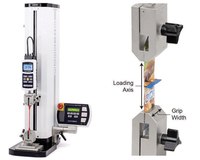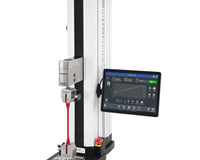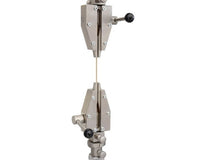Material Testing Blog

The Importance of Grip Selection in Force Measurement
Put these best practices to work for dramatically improved sample alignment and measurement reliability
Force measurement, defined as the measureme...

Discontinued Test Stand Replacement Chart
If you conduct compression and tension force testing on older test stands -- and make ship or no ship decisions based on the results -- it may be t...

Introducing Materials Testing Calculations for IntelliMESUR
Introducing the new Materials Testing Calculations (MTC) software module for IntelliMESUR
MTC expands IntelliMESUR’s capabilities by adding common,...

ESM303 Motorized Force Test Stand to Be Discontinued
The Series ESM test stands have been at the core of the Mark-10 product line since their first motorized test stand, Model ESM, was introduced in 2...

5 Key Factors in Choosing a Material Tester
Material tester, friction tester, polymer tester, adhesiveness tester. Material testing machines go by many names. When companies need to test thei...

How to Choose a Grip for Tensile Testing
Choosing the correct grips and jaws can minimize variations and inaccuracies in tensile force measurements.
Fixtures must be chosen to ensure that ...

FDA 21 CFR Part 11 Compliance for Pharmaceutical & Medical Devices
Finding a materials testing software that truly contains features to support an organization’s compliance to the FDA 21 CFR Part 11 regulation has ...

Bending & Flexibility Testing Best Practices
As the demand for high quality and reliable components and materials increases, flexural or bending tests have become an important test method in b...

Coefficient of Friction Testing Best Practices
Coefficient of friction testing measures the ease with which two surfaces in contact are able to slide past one another. There are two different va...

Delamination Strength Testing Best Practices
Delamination is the separation of the layers in a laminate. Laminate is a sheet of material that has been created by stacking thin layers, or pli...



































